
After NZXT already added keyboards and mice to its own range last year, it was probably only a matter of time before headsets were added as well. That is exactly what has happened now – and even more: The company has presented a whole range of audio products, which we will take a look at. Besides a mixing station called SwitchMix and the NZXT headset Relay, there is also a speaker and a subwoofer with the same name, which we will take a look at in today’s review.
The NZXT Relay Speakers and the NZXT Relay Subwoofer are sold separately and can be freely combined with other components. However, they are visually coordinated and are usually shown as a pair by NZXT. So both do belong together to some extent.
According to NZXT, the NZXT Relay Speakers combine a silk dome tweeter with a fiberglass woofer. Together, these are supposed to operate at 80 watts of power and be able to cover frequencies between 70 and 20,000 Hz. At launch, the speakers will be offered for 260 Euros (currently: € 241.76 *) in black and white.
Only available in black, on the other hand, is the NZXT Relay subwoofer, which sells for 130 Euros (current: € 159.90 *). This downfire subwoofer uses a 6.5″ driver that can be driven with up to 140 watts and is supposed to cover the frequency range between 45 and 150 Hz.
In the following test, we clarify how well NZXT’s newcomers do in practical use, and whether we can recommend the two systems.
Technical details
| Property | Relay Speakers | Relay Subwoofer |
| Dimensions (W x H x D): | 115 x 186 x 159 mm | 211 x 254 x 312.5 mm |
| Weight: | 1.6 kg (left) / 1.5 kg (right) | 4.9 kg |
| Case material: | MDF | MDF |
| Chassis: | Tweeter: silk dome, 20 mm. Woofer: Fiberglass, 76.2 mm |
Woofer: Paper, 165.1 mm |
| Audio characteristics: | SNR: 110 dB Tone distortion: <1% @ 1 kHZ Crossover frequency: 1,600 Hz Frequency response: 70 – 20,000 Hz Power: 80 W |
SNR: 100 dB Tone distortion: <5% @ 1 kHZ Crossover frequency: 50 – 150 Hz Frequency response: 45 – 150 Hz Power: 140 W |
| Variants: | Black, White | Black |
| Price: | RP: 260 €, current: € 241.76 * | RRP: 130 €, current: € 159.90 * |
Scope of delivery of the Relay Speakers & Subwoofer
In terms of packaging, NZXT remains true to the usual principles for the new product category. Both the speakers and the subwoofer are each delivered in a white-purple cardboard box. Inside, packed in foam, are the speakers and the accessories. For the Relay Speakers, these are an info card, an external power supply, a connection cable, a 2×2 RCA cable and a jack cable. The Relay Subwoofer, on the other hand, comes with the info card, the power connection cable and another RCA cable. Both units are thus equipped so that you can get started right away with the included accessories.
Design & Workmanship: Relay Speakers
When it comes to design, NZXT keeps it very simple: the NZXT Relays Speakers come in a completely matte black finish, which in our eyes is both visually and haptically appealing. There is no accounting for taste, but for us “elegant” would probably be the best description. The discreet integration of the NZXT logo, for example, stands out positively. This is placed in a second black tone on the lower front, and thus quite inconspicuous.
The Relay Speakers produce sound via a tweeter and a woofer, which are both located on the front. Otherwise, only the black case wall can be seen there, as well as on the left, right and top. Only the active left speaker has an LED at the bottom left, which glows white in operation.
It gets a bit more exciting on the underside. This is completely covered by a rubber layer, which allows the speakers to stand very firmly and vibration-free. In addition, there is a thread there so that you can optionally attach the speakers to a stand. This is a nice extra in our eyes.
As usual, all of the speakers’ connections are located on the back. Both speakers have a plastic panel there, in which the elongated bass reflex tube is embedded. In addition, there are two solid screw terminals each, through which the passive speaker is supplied by the active counterpart.
The active left speaker also has a few other elements. A power button and the volume control are located there. There is also a hollow DC jack for the power supply, two RCA inputs, a jack input and the subwoofer output.
Overall, NZXT’s Relay Speakers thus combine a typical speaker setup with a very simple yet appealing design. Extras such as the wide footprint, the stand thread and the very high-quality-looking connection terminals stand out positively. In addition, the build quality is also excellent: The solid MDF speakers are impeccably finished, there is nothing to complain about here. However, those who don’t want to rely on an EQ might miss controls for the bass and treble settings. In addition, the built-in power button makes it necessary to turn the speaker back on every time it is disconnected from the power supply.
Design & Workmanship: Relay Subwoofer
The design of the new subwoofer is largely the same as that of the NZXT Relay Speakers. The company also relies here on the same, matte black look, which envelops the heavy MDF housing. The large bass reflex tube is now in front, whereas the woofer radiates downwards. The subwoofer stands on four feet with rubber coating, which also provide a non-slip stand.
A smooth surface is again provided on the two sides as well as on the top, and the connections and controls are again located at the back. The NZXT Relay subwoofer is connected via a double socket, whereby the power supply is this time built directly into the case. Instead of a button, there is also a usual rocker switch on the device, which is supplemented by a white power LED.
Signals are received by the subwoofer via a single RCA connector. There is a full range of settings for the sound output: One knob sets the volume, one sets the crossover frequency of the low-pass and a last one sets the phase. This allows the subwoofer to be adjusted to different speakers and placement positions.
On the subject of design & build quality, the NZXT Relay subwoofer performs as the speakers do. The build is classic, the design successful, and the build quality all around impeccable.
Setup & Sound
NZXT recommends a stereo triangle setup for the Relay Speakers and Relay Subwoofer, with the speakers spaced a bit away from the wall and the subwoofer positioned in the center. This is exactly how we set up our setup. The cabling is, as usual, simple: The main speaker is supplied with data and power and passes on an active speaker signal to the second speaker. Optionally, the subwoofer can be integrated, which then takes over the bass.
Even without the subwoofer, the NZXT Relay Speakers do well, even though you shouldn’t expect miracles in view of the size. At normal room volume and without EQ, the bass is clearly audible from about 55 Hertz and then quickly kicks in. The existing lows are very precise and powerful without putting the higher frequency ranges in distress. In general, the Relay Speakers deliver a very detailed sound. The tuning seems neutral and no area is too much in the foreground or background. Only the particularly low frequency ranges are a bit tight due to their size and design. Without an additional subwoofer, we would therefore rather recommend a placement near the wall to emphasize the low frequency range a bit more.

As soon as you add the Relay Subwoofer, however, such a solution is no longer an issue. When set up appropriately, it perfectly adds the necessary (low) bass to the speakers. Without EQ amplification, this becomes audible from around 35 Hertz and gives the sound the necessary “rumble” – even for the neighboring apartment. Fortunately, the richness of detail is not affected by this: The Relay Subwoofer is not a roaring cube, but it simply adds a solid, crisp bass to the sound image.
All in all, the Relay Speakers and the Relay Subwoofer can be said that NZXT has done a good job with their debut. Of course, this does not open up new sound spheres. Instead, the speakers and subwoofer simply deliver neutral, good sound that is definitely appropriate for the price range.
Summary of the Relay Speakers and the Relay Subwoofer
With the Relay Speakers and the Relay Subwoofer, NZXT offers a two-piece set of speakers and subwoofer that can definitely stand up to scrutiny. For a price of 260 Euros (current: € 241.76 *) and 130 Euros (current: € 159.90 *) respectively, they offer a simple design, an excellent build quality and also a good sound.
This very sound is convincing with and without the subwoofer due to a fairly neutral tuning and a high level of detail. Without the additional subwoofer, you naturally have to do without particularly low frequencies. Apart from that, the sound of the 2.0 speakers is also impressive. NZXT does not become a price breaker with the Relay Speakers and the Relay Subwoofer, but what is offered is undoubtedly respectable in this respect.
However, we would have liked to see a few small details. On the one hand, there is the missing rocker on the 2.0 speakers, which means that they have to be switched on again every time they are disconnected from the power supply. Depending on the application, users might also miss Bluetooth. However, NZXT probably has the simultaneously introduced SwitchMix audio center in mind, which only connects the speakers via cable anyway.
Whether you want to buy the Relay Speakers and the Relay Subwoofer in the end is – as so often – up to personal preference. If you like the design and can do without integrated Bluetooth, you will get a very good overall package with great sound from the speaker system in our opinion. As usual, however, and especially in this price range, it is worth trying it out.
NZXT Relay Speakers & Subwoofer
Design & workmanship
Features
Sound
Value for money
90/100
NZXT's speaker and subwoofer combo offers a good, balanced sound. However, some users might miss the missing Bluetooth.

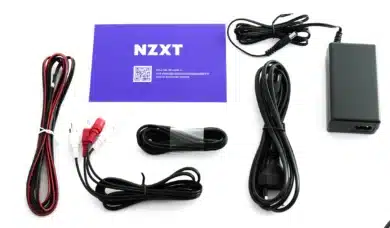




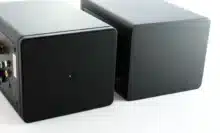
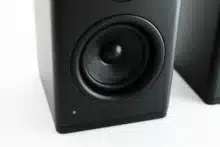

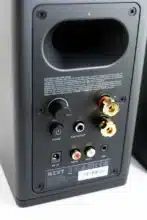

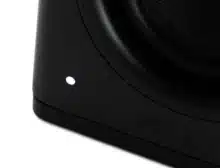




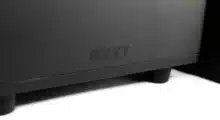




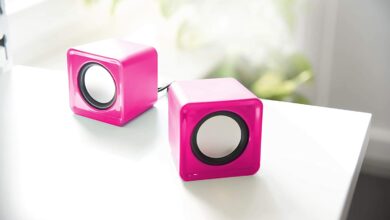
No replies yet
Neue Antworten laden...
Gehört zum Inventar
Beteilige dich an der Diskussion in der Basic Tutorials Community →